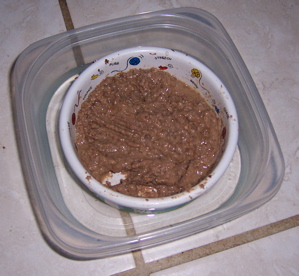Killer Meat
All around the world, cigarette makers are required carry labels such as the one in the picture on the right. Although meat may kill more people than cigarettes, no such label is required on meat--yet the
World Health Organization found that diseases related to the over-consumption of meat, such as cardiovascular disease and diabetes, cause one-third of all deaths world-wide.
Scientists at the National Cancer Institute report (
click here for pdf) those who eat 5 ounces of meat a day are 30% more likely to contract cancer or heart disease than those who eat 2/3 oz of meat per day. That's a big risk to take!
Get Lean with Cultured Meat?
While not totally alleviating health risks of meat consumption, cultured meat may be able to provide leaner and more balanced meat. There are three main nutritional benefits to cultured meat production concerning fat production.
Benefit #1- Low Fat Cultured Meat
First, cultured meat will allow producers to control the fat content of the meat because the product would initially be pure muscle tissue. So fat will be added for taste in any amount desired.
In vitro cultured beef could have the fat content of chicken or salmon. Naturally, not all consumers will choose ground beef with low fat content, so this health benefit would be limited by consumer choices. But, the trend in reducing beef consumption in favor of poultry consumption shows that many consumers would be interested in a healthier beef product.
Benefit #2- “Smart Balanced” Meat
Secondly, even cultured meat that has the same total fat content, has the nutritional benefit of providing meat that balances the
types of good with bad unsaturated fats. Due to
unnatural corn fed diets (see
King Corn) the majority of beef from livestock has 20 times more “bad” omega 6 fatty acids than do grain fed
cows or cows found in the wild. (For more on Omega acids and livestock, click
here) Unlike traditional methods, which provide imbalanced fat content due to livestock feeding, cultured meat production will allow production of meat with a nutritiously advantageous balance of fats. So-called “beneficial” fats, such as Omega-3 poly-unsaturated fatty acids, found naturally in fish oils and synthetically in Smart Balance, could be introduced while keeping saturated fats to the minimum. This is a
tremendous health benefit!
Benefit #3- Diet Meat?
Finally, one suggested method of cultured meat production allows for consumption of meat that is relatively high in fat, but is not fattening. Dr. Mironov, one of the leaders in the field of cultured meat, believes that consumers will be most be interested in the health benefits of cultured meat. He suggests that chitosan should be used in the production of cultured meat. Chitosan is edible and would remain in the final meat product. Chitosan could absorb fat, but would not be digested. (Read more
here)
My Thoughts
Personally, while I think the first two benefits are huge, this last benefit is a bit suspect to me. One commenter remarked that chitosan reminded him of another fat free fatty food, P & G's short lived Olestra potato chips. As anyone can recall that idea ended up being a
explosive disaster--literally. Consumers of Olestra frequently complained of abdominal pain and sever cases of Montezuma's revenge. Further, consumers weren't losing weight because they just
ate more fatty foods to make up for the calories "saved" through eating olestra chips.
I think the lesson we can learn from olestra is that we consumers have to take responsibility for what we eat. If cultured meat becomes a reality, it is imperative that cultured meat
replace traditional meat, not be used to supplement our already
dangerous eating habits.












